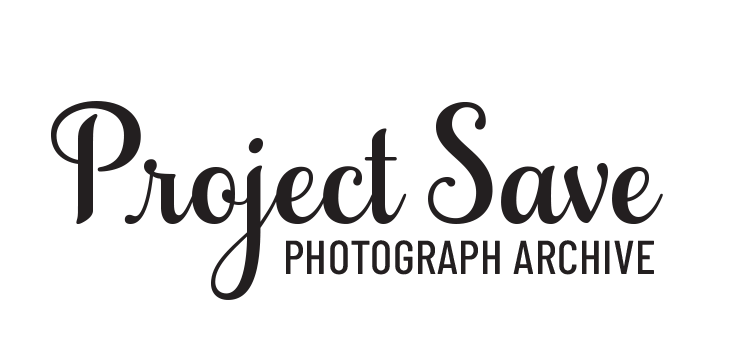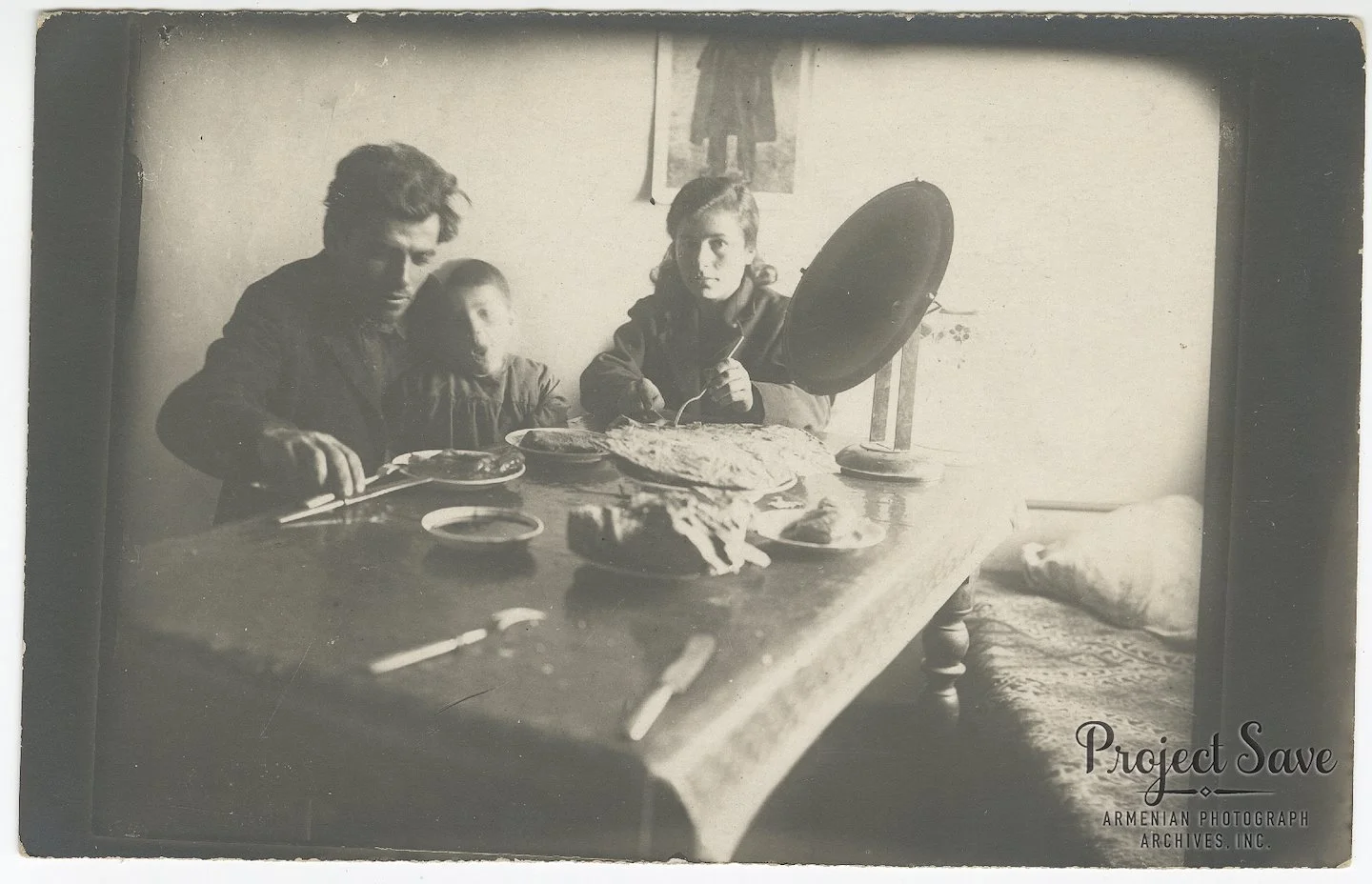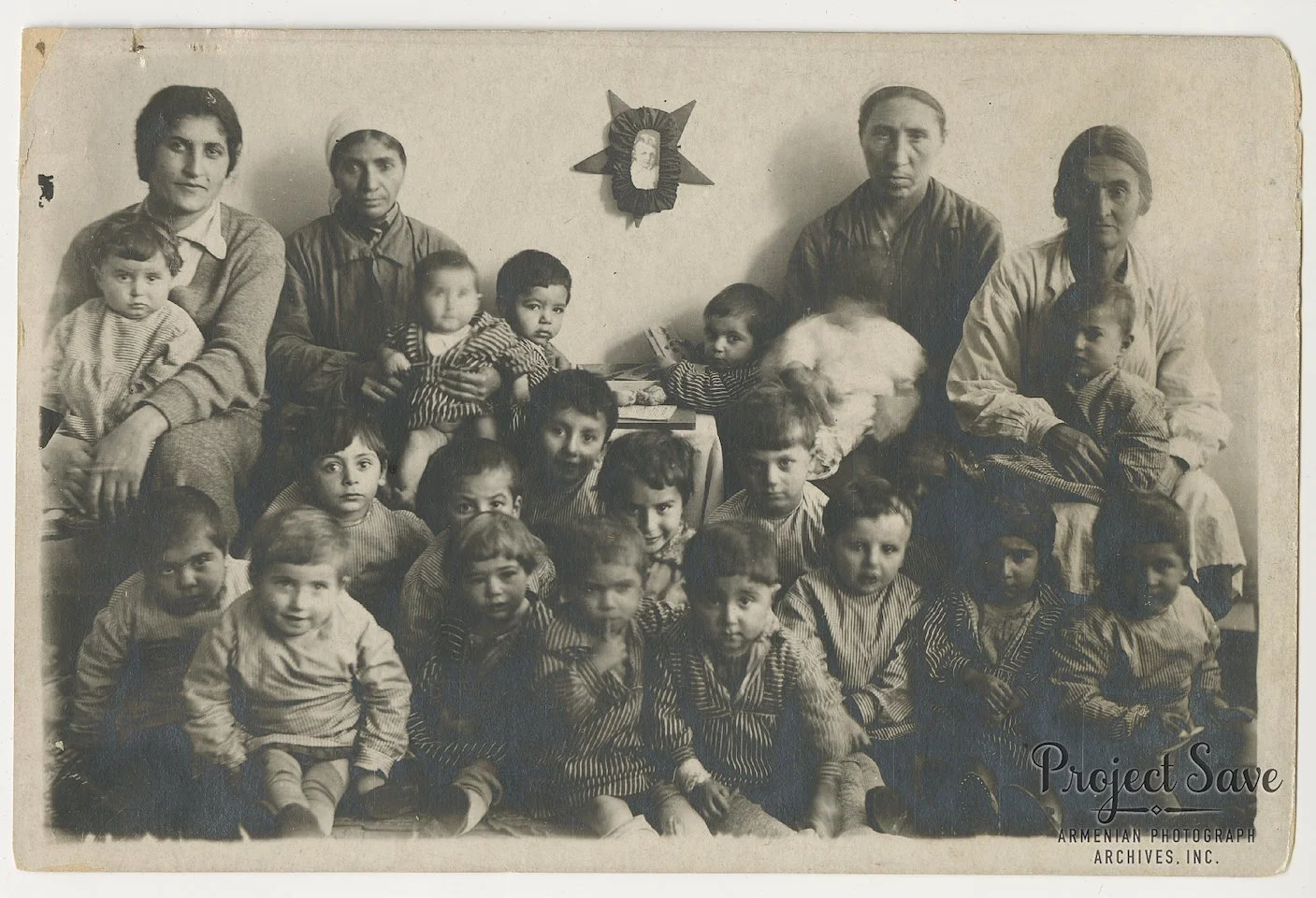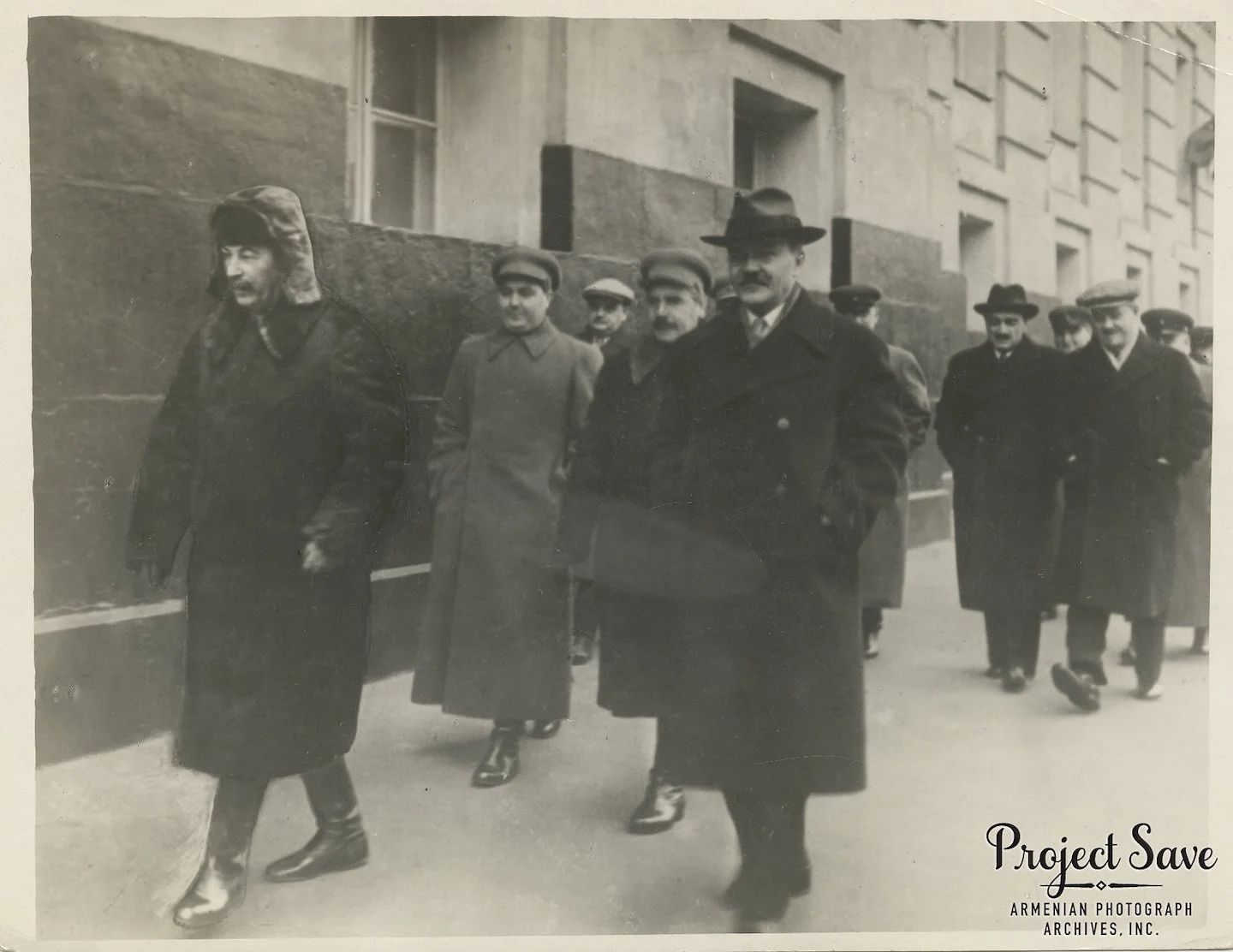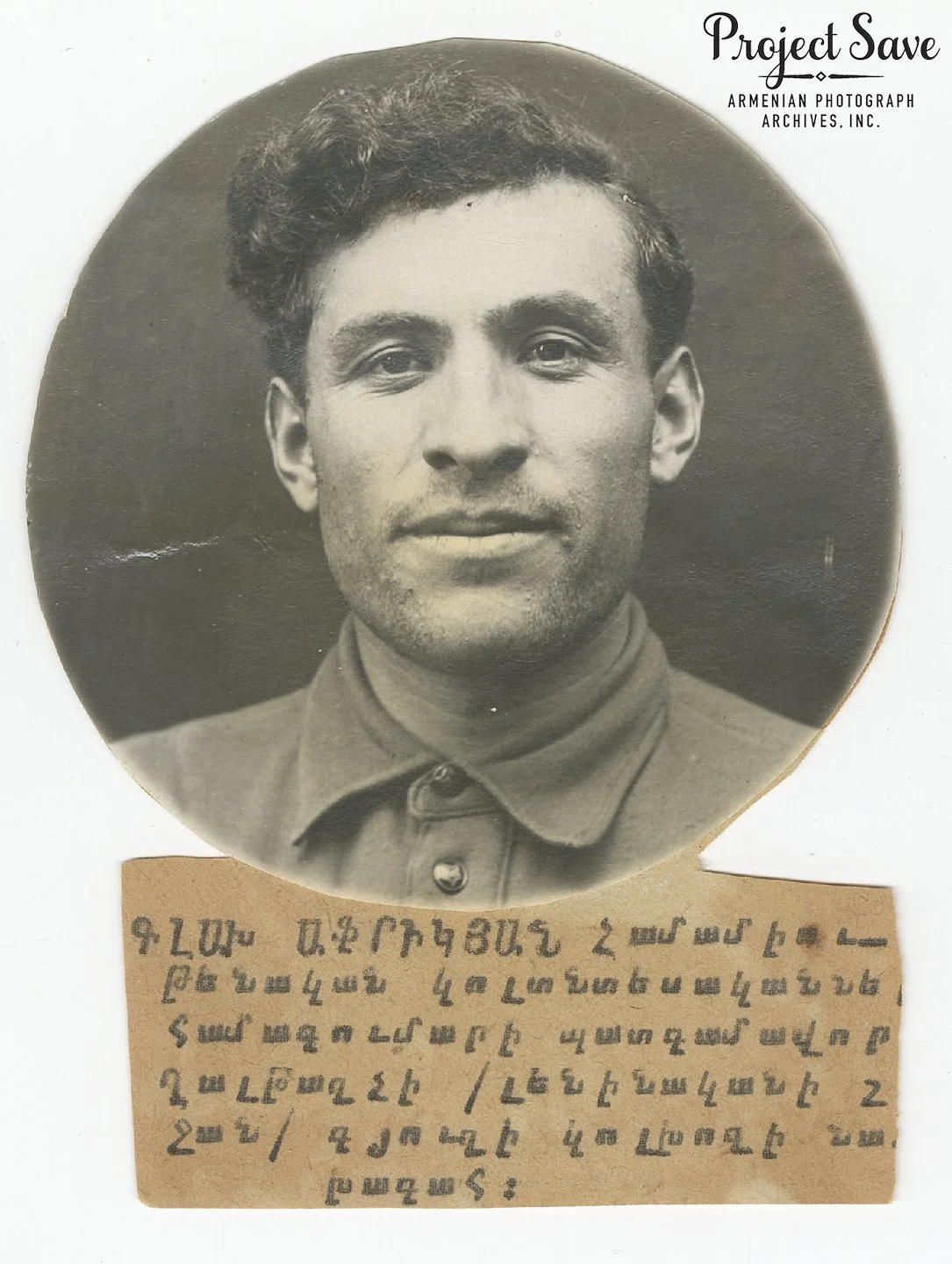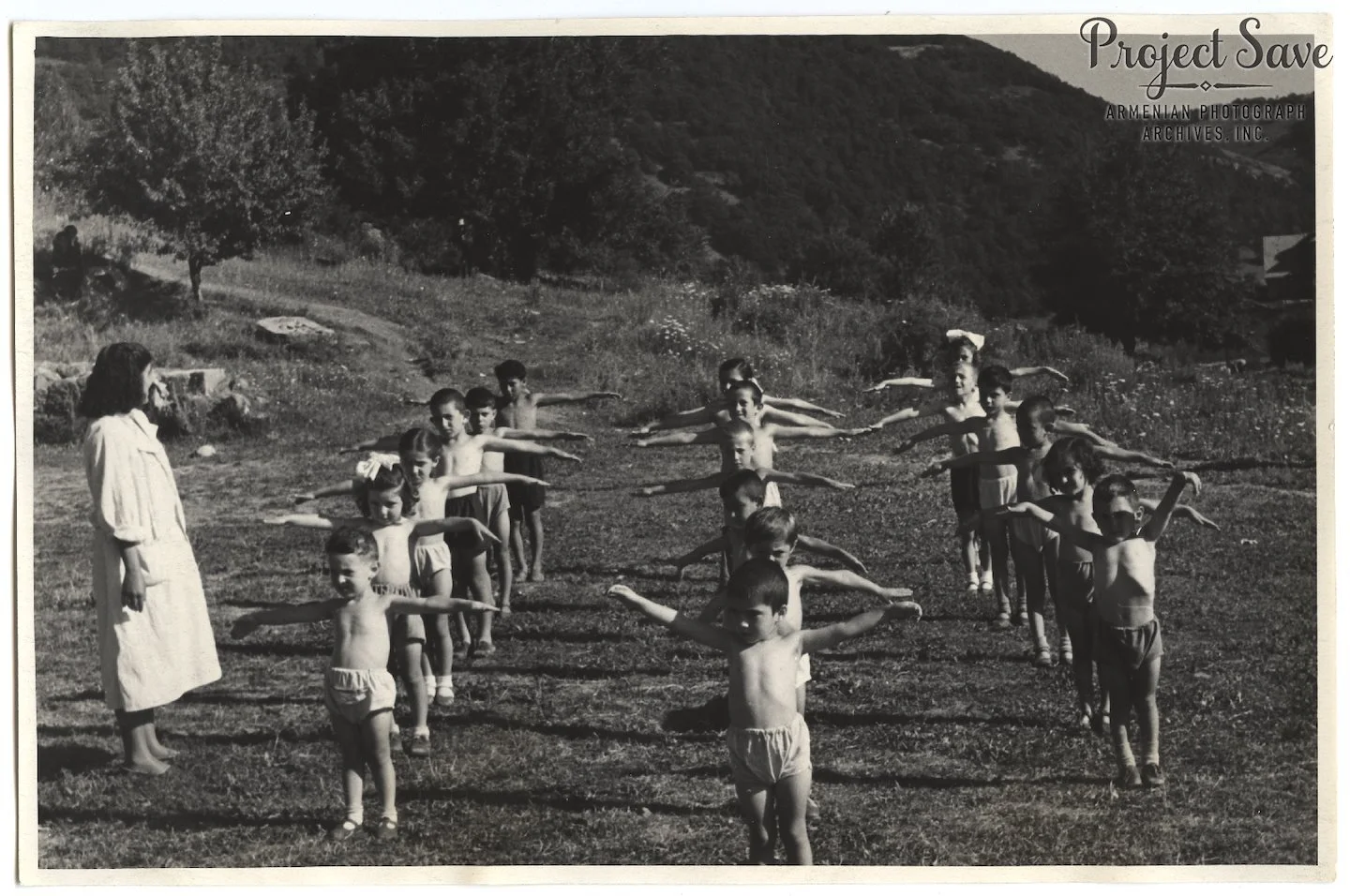The Jack Torosian Collection
The collection consists of 1361 silver gelatin photographs (744 of which are available online) from the collection of the late Jack Torosian, a collector based in New York City, originally from Smyrna. The photographs show life in Soviet Armeniafrom 1923 to 1973, with the bulk from 1923 to 1973.
The photographs cover many aspects of life in Armenia during the Soviet era: factory work life, construction of factory buildings, workers’ housing, education, the Young Pioneers (Vladimir Lenin All-Union Pioneer Organization), repatriates arriving from abroad and at work, and portraits of notable figures of the time in politics, military, and the arts and sciences.
-
This series contains portraits of individual factory workers, construction of factory buildings, workers’ housing, and workers at their machines. Workers in factories manufacturing items such as: textiles, metals, tobacco, cheese, barrels, shoes and other leather goods, meat-processing, rubbers, lumber, wine, clocks/watches, and canning products. Photographs also show labor that was presumably subbotnik: compulsory ‘volunteer’ labor, and work being performed in correctional facilities.
There are a large number of individual portraits of workers that appear to have been published in workers’ newsletters or pamphlets. Portraits are identified by position- such as ‘comrade’ or identified by name, or are not identified at all.
Some are portraits taken in recognition of awards for high productivity, such as ‘best mother’ or Stakhanovite. “Stakhanovian” refers to the Stakhanovite movement – a campaign intended to increase worker productivity and to demonstrate the superiority of the socialist economic system. The movement was named after Alexey Grigoryevich Stakhanov, a Soviet and Russian miner, who set a productivity record in 1935 during his mining shift. Stakhanov’s records set an example throughout the country and gave birth to the Stakhanovite movement, where workers who exceeded production targets could become “Stakhanovites.”
Photographs also show the construction of housing for workers, workers in their dormitories or homes, relaxing and having mealtime. Workers are also shown participating in political rallies, like the October revolution commemorative march and the May Day Parade, and attending factory meetings. Factory nurseries are also included, showing nursery workers and children in their nursery schools, in beds, at mealtime, and at play.
-
Views of Yerevan:
This series contains views of Nor Arabkir, Nor Sebastia, street views, statues of Lenin, trolleys, buses, parks, fountains, government buildings (K.G.B. building, Government House, Armenian Soviet Socialist Republic Supreme Soviet building), Lenin Square, many with political rallies, restaurants, hotels, school buildings, and medical buildings.
-
Photos in this series document School children in classrooms, preschools and nurseries; university students, academics, and university student housing.
University students in lecture halls, working on mechanical drawings and machines, in engineering, chemical, animal science, and civil engineering laboratories, using telescopes, in carpentry shops, and libraries.
Exterior and some interior shots of:Academy of Sciences, Byurokan Astronomical Observatory, Children’s Railway of Yerevan, Yerevan Polytechnic Institute, Matenadaran (Mesrop Mashtots Institute of Ancient Manuscripts), Moskva Movie House, National Museum, Yerevan Agricultural Institution, Yerevan Conservatory, Yerevan Artists’ Home, and libraries.
Film stills from films “Yerkir Nairi” and “Pepo” 1935. Photographs of opera, music and theater performances.
The Young Pioneers (Vladimir Lenin All-Union Pioneer Organization), youth organization in the Soviet Union to teach Communist principles to children. Photographs show Pioneers at camps in Dzaghgatsor and in Yerevan, marching in rallies, playing sports, dancing, swimming, studying guns, doing washing, gathering at the Pioneer Palace in Leninakan (now Gyumri).
-
This series documents doctors and nurses in clinics and hospitals with patients.
Exterior and some interior shots of hospitals, clinics, medical schools: Arzni Sanatorium, Gyumri Hospital, Mary Nubar Eye Clinic of Yerevan, Nor Arapgir Clinic, Polyclinic in Nor Arabkir,Sanatorium and Physical Therapy Institute of the Republic, Yerevan’s Children’s Clinical Hospital, Veterinary Institute (and the construction of), Yerevan Medical Institute, and alternative medicine clinics “Mechanical Medicine Section.”
-
This series contains portraits of notable figures
Military and political leaders:Ivan Bagramyan: who achieved the rank of Marshal of the Soviet Union, and was commander of the First Baltic Front in 1943 during World War II.
Soviet leaders identified in either portraits or group photos:Joseph Stalin, Kliment Voroshilov, Nikolai Yezhov, Lazar Kaganovich, Georgi Dimitrov, Vyacheslav Molotov, Anastas Mikoyan, Nikita Sergeyevich Khrushchev, and Frol KozlovArtists:Portraits of famed artists such as painters Mardiros Saryan, Hagop Gochoyan; sculptors: Nikolai Avetkov, Ara Sargsyan, Grigori Kepinov, and Ervand Kochar; composers/conductors: Nurhan Arman, Haro Stepanian, Edward Mirzoian, Artemi Ayvazyan, Alexei Ekimyan, and Arno Babadjanian. Musicians/singers: Avet Gabrielyan, Zara Dolukhanova; actors: Vahram Papazian, Bedros Atamian, and Babken Nersesian; poets/writers: Khachig Tashdents, Geghan Sarian, Avedik Isahakian, and Derenik Demirchyan.Professors, doctors and scientists. Stepan Malkhasyants, linguist; Sergey Mergelyan, mathematician; Benjamin Markarian, astronomer; Victor Hampartsoumian, astronomer; Leon Abgarovich Orbeli, physiologist
Rachia Ageryan, academic; Ardashes Melik-Atamian, medical scientist.
-
Also in the collection are photographs from compatriotic unions in the United States, such as the Soviet Armenian Committee for Aid to Armenia (HOG or HOK), that were actively involved in constructing new quarters for refugees in Soviet Armenia. Numerous photographs are also labeled as created by the Armenian National Committee of America (ANCA). The collection also includes a small number of portraits of Armenian Americans in the US armed forces.
A small group of photographs are included from a trip to Armenia made by Oksen Sarian of the Armenian Progressive League of America in 1960. The collection also includes a small number of portraits of Armenian Americans in US armed forces.
The photograph shows a group of dark-haired nursery-school-aged children and several women seated holding children in front of a bare wall— except for a star-framed portrait hanging behind them of a light-haired child.
Did I think it was an orphanage? Maybe, or perhaps, I thought, it could be a factory daycare facility. But what really drew my attention was the star-framed picture of the child on the wall, a portrait of baby Lenin.
Vladimir Ilyich Lenin was born on April 10, 1870. Vladimir Ilyich Lenin was a lawyer and politician, a Russian revolutionary and communist—a follower of Marxist theory with his twist. He was a socialist (anti-capitalist and anti-imperialist), the prominent leader of the October Revolution, the first head of the Russian Soviet Socialist Republic, and the first de facto leader of the Soviet Union from 1922 until his death two years later at age 53.
Interestingly, with all this notoriety, Lenin was insistent that he not be made into an idol or icon. During his lifetime, and especially after the 1918 attempt on his life, Lenin discouraged the development of any cult around his personality. He left precise written instructions with his wife that there be no memorials to him after his death.
That, however, was not to be—Stalin saw to that. Joseph Stalin, leader of the Soviet Union for the 31 years following Lenin’s death in 1924, is credited with developing the cult of Lenin as part of his plan to have the same for himself one day. These baby Lenin images are excellent examples of Soviet-era photo manipulation used to further the system’s ideals.
But why the adoration of Lenin as a three-year-old? And why involve children in this adoration? Were the atheist Communists, in fact, mirroring the adoration of baby Jesus? Just as little children are involved with the adoration of baby Jesus—the Christmas story—the Communists created an icon for their children.
Soviet Armenia, or the Armenian Soviet Socialist Republic, was one of the republics of the Soviet Union from 1920 until 1991. Under Soviet control, Soviet Armenia underwent an industrial transformation and collectivization of agriculture, and its population grew. Under Lenin’s New Economic Policy, Armenia had a brief period of peace. In 1945 Stalin invited the Armenian diaspora to return to Armenia. Repatriates were the children of Armenians who had fled the Ottoman Empire during the Armenian Genocide and lived outside of Armenia.
Starting in the 1920s and 1930s, Armenian diaspora organizations such as the AGBU (Armenian General Benevolent Union) resettled Armenians in Soviet Armenia. The Committee for Aid to Armenia (Hayastani Ognut’yan Komite – HOK), created by the Soviet Armenian government in 1921, was actively sponsoring the construction of new quarters for refugees in Soviet Armenia. The repatriates were sadly confronted with poverty, repression, and some became victims of deportations. Following the death of Stalin, political restrictions were somewhat loose; this period is also sometimes called the Khrushchev-era thaw. This period saw the culture and the economy flourish.
